The Okavango Delta
With the exception of Moremi, the largest tounge of dry land that pushes the 15,000km2 delta, the Okavango consists of a network of privately managed safari concessions, some of which are on islands. Like Linyanti to the north, these are all confirm to the highest standards. Here high levels of comfort, outstanding service and professional guided come together with outstanding natural surroundings and impressive wildlife.
Which animal characterises, or is the highlight of, a safari in the Okavango rather depends on where you stay. Here you can find both so-called “wet camps” and “dry camps”, if it is possible for you to do so staying in a combination of the two would be ideal. In the wetter areas the focus in on safaris in motor boats and in the so-called Mokoros - dug out canoes traditionally made from tree trunks, that can be polled silently through the swallow water. In recent years Mokoros have started to be made from plastic, and while this may not sound so idyllic, there are good reasons to do so, namely to conserve the large trees that they used to be made from. In and around the water you will see hippos and many antelopes adapted to living in these wetlands such as the red lechwe and waterbuck. There are also many colonies of birds such as cormorants, storks and especially herons. Elephants can be seen all around the delta, in both the wetter and drier environments, as are many owls and birds of prey. On the larger islands and the savannah surrounding the delta you can see many zebra, buffalo, impala, and wildebeest. Predators are common, and you can find all of the big cats here. One of the largest remaining populations of African Wild Dog is found in this area, they can roam freely between the Delta, Linyanti and Chobe, and can be seen frequently here. Spotted hyena are also common, often coming into conflict with the other large predators.
The Okavango is one of the world’s biggest inland deltas, but it is very unusual as its waters never flow into the sea. The delta simply runs out into the north west corner of the Kalahari Desert, the water either evaporating or sinking down into the sandy soil. Another unusual feature of the delta is that its water level is at its highest during the dry season between August and October. This is due to the fact that most of the river water has its origin in the Angolan highlands some 1,200km away, and as the delta is both very wide and very flat, the water takes months to reach the smallest channels. It is also easiest to see the large mammals during the dry season, although there are animals in the delta all year round. The closest international airport is Maun, some 100km south of the delta. Many light aircraft that provide a connection to a lot of the delta’s camps also start out from Maun, which is also the usual starting point or end destination for a vehicle safari in north western Botswana. The Okavango Delta is simply an oasis of life, an one of Africa’s greatest wildlife gems - and it feels like you can nearly have it it to yourself!
Highlights:
- Outstanding mosaic of beautiful wetlands and drier land, framed by crystal clear water.
- Safari in a motor boat, or better still, being poled along in a simple Mokoro canoe.
- Isolated camps and unique guided safaris, both driven and on foot, with many animals.
Highseason: July to October
These attractions can be seen on the following tours
























